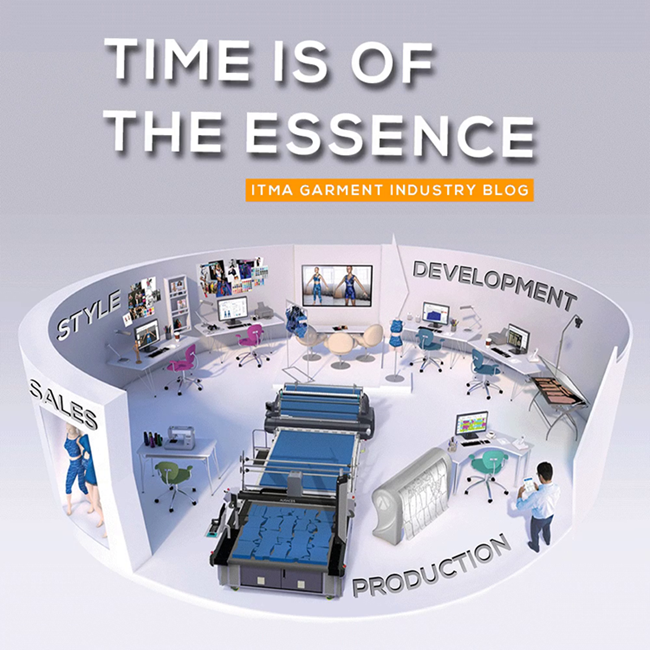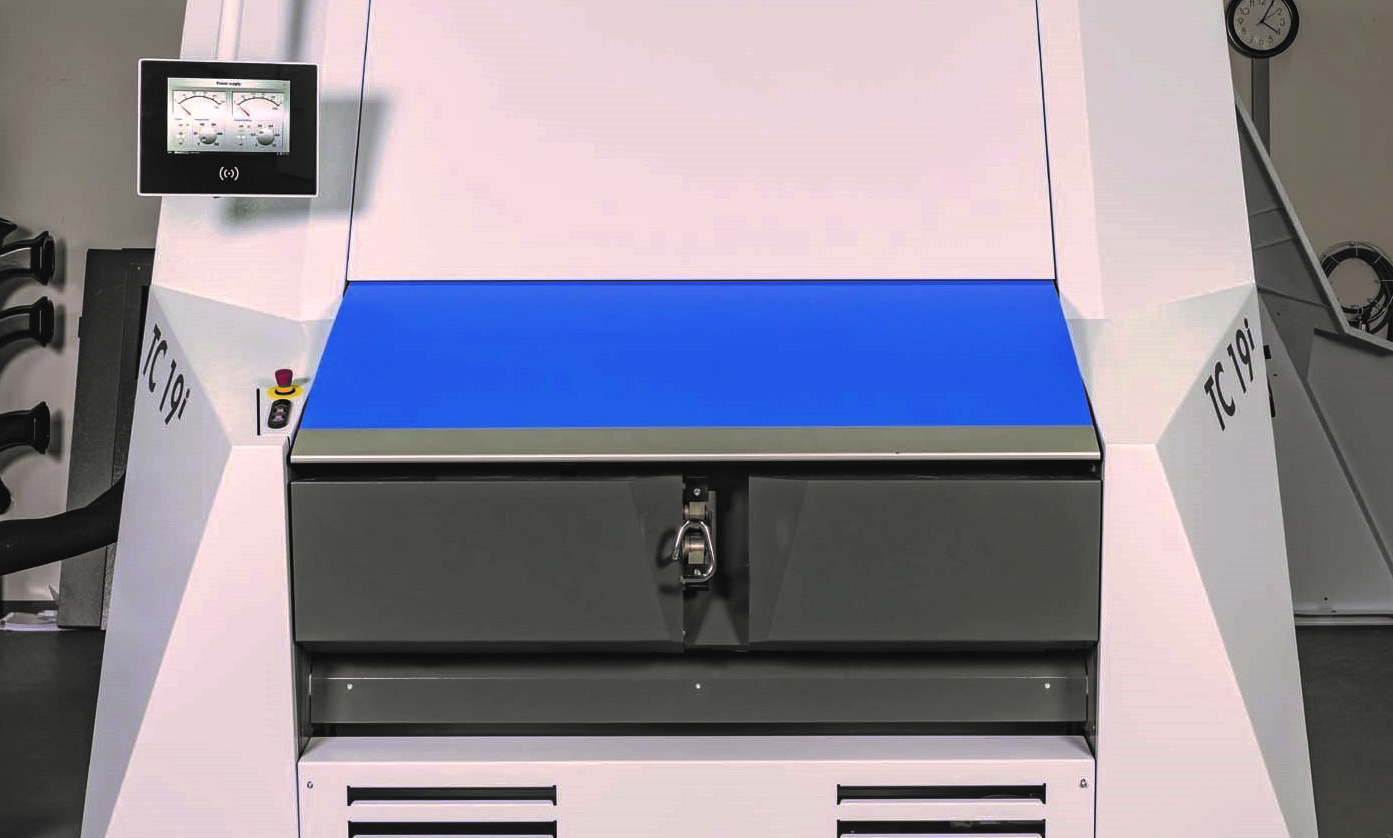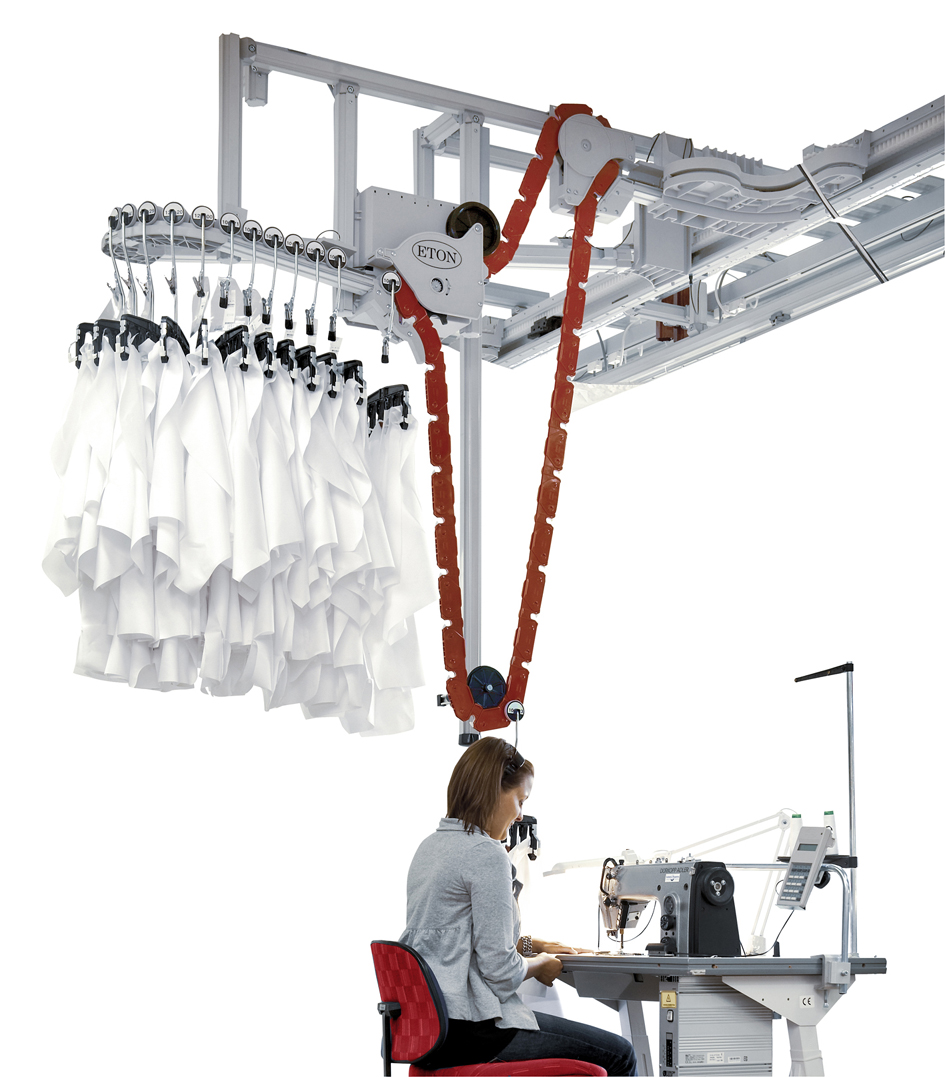All-in-one solution for when time is of the essence

16 22
September 2027
Messegelaende HannoverGermany

With ITMA 2019 days away, here are a few of the technical highlights of what’s been announced already. They can, of course, only be the tip of the iceberg when it comes to the innovations to be discovered in Barcelona, but I’ll try to include as much as possible in the limited space permitting.
Spinning
Industry 4.0 and what it is enabling will certainly be the major theme at this year’s ITMA, and manufacturers of spinning systems, for example are making solid advances in this field, such as Saurer, with its new senses control system.

Saurer
Saurer’s senses big data system is designed to collect, aggregate and analyse the production, quality and machine data of an entire textile fabrication chain across all of its locations.
A big data system, senses is designed to collect, aggregate and analyse the production, quality and machine data of an entire textile fabrication chain across all of its locations. The data is available to operators as well as mill and company management via an intuitive web interface and standardised ERP interfaces anywhere – even on the move.
Rieter’s machines will similarly be powered by the latest Digital Spinning Suite, including the new UPtime software which collects performance-critical data, identifies deviations, including their causes, and indicates potential future errors or even failures, via a combination of monitored parameters and big data analytics.
Truetzschler

The new Truetzschler TC 19i – automatic tolerances to within 3/1,000ths of an inch.
Truetzschler will introduce a new carding system that could have a significant influence on the production of all staple fibre products – both spinning and nonwovens, at ITMA 2019.
The setting of the carding gap on card openers has a critical impact on quality and performance and the new TC 19i intelligent card can now automatically and continuously optimise it to within a tolerance of 3/1,000ths of an inch – something that has not before been possible through human operation of a machine.
The requirement for integrated automation in the spinning process says Savio, and manufacturers are looking for fully automatic link solutions to replace freestanding winders and ring spinning frames (RSF) without doffing devices. This has led Savio to offer customers new bespoke link solutions, the latest being the Multi Link, which connects multiple ring spinning frames to one Savio winder, as a tailor-made circuit to link two or three RSFs to one winding machine.
Weaving
Over 128,000 micro-selector sensors will be actively powering ten Bonas advanced Jacquard systems at ITMA 2018. This is the equivalent of an average working weaving mill installed with 48 carpet weaving machines, each with jacquards equipped with 2,688 hooks. A total of ten jacquards will be operating on advanced weaving machines throughout the show, six of them in operation at the main Vandewiele stand.
Similarly, for carpet tufting machines, sensors can now individually control every yarn in a fabric construction with the latest Eltex EYE for carpet tufting machines.
Unlike scanning inspection systems, this monitors each individual yarn position in real time with sensors fitted between the feed rollers and the needles and based on the well proven piezoelectric principle. Their compact design already enables them to be fitted on machines with gauges as dense as a tenth of an inch.
Among seven looms to be displayed by Itema, meanwhile, will be the new Discovery, described by the company as the “loom of the future” and featuring a breakthrough mechatronic platform and a completely new weft insertion system, while Picanol will feature 12 machines deploy the latest Industry 4.0 advances. The self-setting machine is just around the corner, the company promises.
Nonwovens
One of the largest exhibits at the show, the complete Hyperpunch Hα needlepunching range for nonwovens powered by the new diloline 4.0 operating system will be demonstrated by DiloGroup.
The diloline 4.0 has been equipped with a range of smart manufacturing functions in collaboration with Siemens which further simplify operation and increase transparency in web forming and consolidation via the storage and rapid analysis of all machine data.
Andritz Nonwoven will meanwhile employ augmented reality to fully illustrate and explain the technologies incorporated into its velours needleloom.
Finishing

Monforts
Digital twinning is a concept being introduced by finishing machinery specialist Monforts.
By exploiting the latest advanced sensor technology, comprehensive technical machine data can now be virtually mapped in the cloud in real time and the data can be easily accessed using the latest Smart Support and Smart Check apps for an instantaneous status overview.
Baldwin is meanwhile introducing the TexCoat G4 non-contact precision application system for fabric finishing. The non-contact spray technology brings numerous advantages compared to conventional methods of applying finishing chemistry with zero chemistry waste and drastically reduced water and energy consumption.
Digital printing
A record throughput of 90 linear metres a minute at a resolution of 600 x 600 dpi can be achieved with the new Bolt single-pass inkjet printer which will be introduced by Italy’s EFI Reggiani at the show.
Designed for 24/7 operation, the Bolt is equipped with a low-maintenance, fast start-up recirculation printhead allowing users to reduce the cost of digitally printed textiles per metre while creating a broader range of designs quickly and efficiently. The printer can also include one or more analog printing stations for the creation of special effects.
SPGPrints will meanwhile be giving demonstrations of its second generation Pike single-pass digital textile printing machine printing on viscose fabric with reactive ink.
Following its scene-stealing debut at ITMA 2015, the Pike has been enhanced in order to achieve even higher speeds and now combines the industry’s highest resolution of 1,200 dpi with the smallest droplets and lowest ink consumption available.
Garment handling
In the field of garment and home textile products handling, Eton Systems will be demonstrating a complete installation designed for the major Industry 4.0 networked manufacturing plants that are now being constructed worldwide for this sector and provide savings of between 40-60%.

ETON
Eton Systems will demonstrate a complete installation designed for Industry 4.0 networked manufacturing plants.
A typical Eton system consists of overhead conveyors with individually-controlled product carriers which automatically steer their way through programmed operation sequences. The systems are highly flexible and can be rapidly modified to changes in the production line or the need for expansion.
ACG Kinna Automatic will provide live demonstrations of its new robotic pillow filling system which has the ability to fill and finish some 3,840 pillows per eight-hour shift. This is a considerable improvement on what is currently possible with either manual or semi-automatic systems, resulting in significant savings in both labour and energy for busy home textile businesses.
The technology is based on two robotic arms which have been specially modified with advanced gripping tools and seaming and labelling devices. The pillows are automatically sealed with either single or double lockstitch seams and labels can be attached without interrupting the flow of the system.
That’s all for now – see you in at ITMA 2019 in Barcelona.
Subscribe to our mailing list and stay up-to-date with news and developments in ITMA and the textile and garment industry.